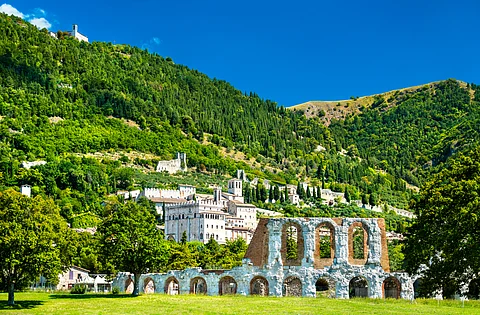
- Destinations
- Experiences
- Stay
- What's new
- Celebrating People
- Responsible Tourism
- CampaignsCampaigns
- Subscribe
- Buy Now

After Venice introduced a trial fee for day-trippers in 2024, authorities have now gone further and extended the entry tax for 2025 as well. Implemented to control the overwhelming influx of tourists and enhance the quality of life for residents, this tax will be in effect for 54 days in 2025—up from 29 days in its initial phase. The city has blocked out dates in April, May, June and July wherein the ticket (EUR 5/INR 453) will be required between 8:30AM and 4:00PM. Overnight visitors and residents are exempt, but those without tickets risk fines ranging from EUR 50 (INR 4,533) to EUR 300 (INR 27,199).
If you’re planning your Italian sojourn this year, and would not want to cough up the revised tourist tax of Venice, consider visiting some of the country’s less well-known destinations that are just as enchanting as Venetian canals. Whether you’re traversing the canyons of Castelmezzano or swimming in the azure waters of Ostuni, here are five hidden gems in Italy that will capture your heart.
Frequently mentioned as one of Italy’s most beautiful villages, Castelmezzano, located in the southern region of Basilicata, is a small village amid the wild landscape of Cognato Piccole Dolomiti Lucane Regional Park. With deep canyons crisscrossing, residents have discovered an ingenious way to build their houses around the landscape, connecting them via a series of steps, intricate alleys and passages. Today, Castelmezzano is a charming urban setting that attracts travellers far and wide. Hike the “Path of Seven Stones,” a trail that connects the town to Pietrapertosa, another beautiful village immersed in nature. The more daring can travel between the towns using a more adrenaline-pumping means of transport—“The Angel's Flight.” This is a high-speed zipline that offers an evocative view from a 400-metre elevation at speeds of 120 kilometres per hour.
Off the Gulf of Gaeta is the majestic island of Ponza, one of the pearls of the Mediterranean. With its sandy coastline, coves, sea stacks, azure waters and fantastic archaeological sites, it gets lost under the radar of most tourists. Conveniently accessible all year round from Formia and Terracina, and in summer from San Felice Circeo and Anzio, you can explore the island far and wide by car. However, it is by boat that you can fully appreciate the splendour of this crescent-shaped strip of land. A tour of the sea is a must for visitors, perhaps after a relaxing morning at the beach or after lunch at one of the restaurants alongside the harbour. Trekking enthusiasts can spend hours at Monte Guardia, Punta Fieno and Frontone, while diving enthusiasts are sure to admire the remains of a ship that sank during World War II at Punta Papa.
Nestled among a landscape of wine and olive trees is Ostuni, “The White City.” Considered one of Italy’s most photogenic places, Ostuni is situated on the foothills of the Murge, a karst topographic plateau. The town stands out against the green landscape of olive groves. It has labyrinthine paths, winding alleyways and ladders, and eight Aragonese towers that make it a must-visit destination. The coast is dotted with views of the Marina di Ostuni, the marina of Villanova, and the bathing and thermal resort of Torre Canne. The Torre Guaceto Nature Reserve is along the coast, where a 16th century tower dominates dunes and sandy bays.
The Val di Noto, or Vallo di Noto, is the ideal destination for those who love history, culture and art. Located in southeastern Sicily and extending between the provinces of Ragusa, Syracuse and Catania, this region is home to eight UNESCO World Heritage Sites that were chosen for their representation of Baroque art. Val di Noto is also a paradise for sea lovers, thanks to some of the most picturesque beaches in Sicily. The area also includes several natural areas of great importance, from the Plemmirio Marine Protected Area and the Pachino marshes to the wildlife oasis of Vendicari, the Neviere di Buccheri (from where one can enjoy a unique view of Mount Etna), the Gulf of Catania, the coasts of Calabria, and the necropolis of Pantalica—which has more than 5,000 catacombs carved into the rock.
Known as the “City of Stone” and standing on the flank of Mount Ingino, Gubbio will win you over at first sight with its medieval charm. Begin your tour from the Piazza Grande or Piazza della Signoria, a “hanging” square overlooking the city. On its sides are the public palaces: the Palazzo dei Consoli in the Gothic style and the Palazzo Pretorio. The Renaissance-style Ducal Palace is a stone's throw away, whose gardens present a beautiful view of the city. The tall, narrow door at the side of the large gate is the “Dead Man's Door.” According to legends, the coffins of the dead passed through here. For something less gloomy, don’t miss a trip to the nearby 1st century BCE Roman theatre and the Roman mausoleum before you leave.
